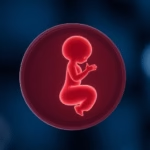Understanding Rat Pregnancy: An In-Depth Guide
Today we will be talking about the pregnancy of rats, a fascinating aspect of these small mammals that often goes unnoticed. A rat’s pregnancy, known as gestation, is a critical phase in their life cycle, influencing everything from their health to the health of their offspring. Rats, being one of the most commonly domesticated animals for laboratory and pet purposes, require proper understanding and care, especially during this delicate phase. In this comprehensive guide, we will explore various aspects of rat pregnancy, focusing on its duration, signs, care strategies, and more. Our aim is to provide a detailed look into the gestational process, ensuring that both current and prospective rat owners can foster a healthier environment for their pets.
Definition of Rat Pregnancy
Understanding the Concept of Rat Pregnancy
Rat pregnancy refers to the period during which a female rat, known as a doe, carries developing embryos following fertilization. This gestation period is crucial as it encompasses everything from mating, conception, and nurturing of the developing young inside the mother’s womb, to the eventual birth of the pups. The typical gestation period for most rat species, such as the common brown rat (Rattus norvegicus), lasts approximately 21 to 23 days. Understanding this process is important for owners and researchers alike, as it affects long-term health and behavior both for the mother rat and her offspring. Monitoring the health of a pregnant rat, providing adequate nutrition, and ensuring a safe environment are essential components throughout this period. Knowledge of rat pregnancy can aid in responsible ownership and research practices.
1. Gestation Duration of Rats
How Long Does a Rat’s Pregnancy Last?
The gestation period of a rat typically lasts between 21 to 23 days, with variations depending on the species and individual health factors. During this time, the female rat will experience several physiological changes. Early stages of pregnancy may not be visibly apparent, but as time progresses, noticeable signs such as increased body weight, more prominent nipples, and territorial behaviors may emerge. It is crucial for rat owners to keep track of the gestation timeline to prepare for the arrival of newborn pups. Proper understanding of this timeline helps in organizing resources and space to ensure a comfortable environment for the doe as she transitions into motherhood. Adequate preparation not only assists in the smooth delivery of pups but also significantly contributes to the overall well-being of the mother rat during and after pregnancy.
2. Signs of Pregnancy in Rats
How to Recognize When Your Rat is Pregnant?
Recognizing the signs of pregnancy in rats can be both exciting and critical for ensuring their well-being. Some common indicators include behavioral changes such as an increased need for nesting materials, more significant affection or a desire for solitude from other rats. Physically, you may notice weight gain, more prominent nipples, and a noticeably rounder abdomen as the pregnancy progresses. Observing these signs can help in assessing when to prepare for the arrival of the pups. It’s essential to maintain a comfortable and stress-free environment for the pregnant rat to reduce anxiety levels which could affect gestation. Regular health check-ups during this time will further ensure that the pregnancy is progressing healthily.
3. Caring for a Pregnant Rat
Essential Care Tips for Pregnant Does
Caring for a pregnant rat is an essential responsibility for any rat owner. Ensuring that the doe has a diet rich in nutrients, including proteins, vitamins, and minerals, forms a foundation for healthy pups. As her pregnancy progresses, it’s important to provide ample nesting material so she can create a suitable nursery for her young. Loss of appetite or lethargy can indicate health issues, necessitating a visit to a veterinarian. The environment should be safe and quiet, minimizing stress factors from loud noises or overcrowding with other pets. Regular health checks and a comfortable habitat can make a significant difference in the overall health outcomes for both the doe and her future offspring. Knowledge of potential complications is also vital as it prepares owners for prompt responses to any issues arising during pregnancy.
4. Nutrition for Pregnant Rats
Feeding Requirements for Expecting Mothers
Nutrition plays a pivotal role in the health and development of puppies during pregnancy. Pregnant rats should be provided a diet high in protein, vitamins, and necessary minerals to ensure they maintain their health and support their developing young. Foods such as high-quality rat pellets that are enriched with amino acids, fruits, and vegetables should be given. However, moderation is vital to prevent obesity in the mother. Access to fresh water is equally important as hydration directly influences body functions. Consulting with a veterinarian about dietary plans tailored specifically for pregnant rats can enhance both the health of the mother and her pups. The transition into higher nutritional demands can be gradual to allow the rat to adjust and avoid digestive issues.
5. The Birth Process
Understanding How Rats Give Birth
The birth of rat pups, also known as kindling, is a significant event in the life of a doe. Typically occurring between 21 and 23 days post-fertilization, the delivery process is relatively quick, rarely lasting more than a couple of hours. The mother rat will create a nest from the nesting materials previously provided, where she will give birth to anywhere from 6 to 20 pups at a time. It’s crucial to provide a secluded and calm environment during this phase, as disturbances can lead to stress for the mother and may impact her ability to care for the pups immediately after birth. After giving birth, it is important to monitor the mother and her new litter for signs of distress or neglect, ensuring a nurturing environment as they begin to grow and develop.
6. Postpartum Care for the Mother Rat
Looking After the New Mother and Her Pups
Following birth, postpartum care is vital for the mother rat’s recovery and the well-being of her pups. This includes providing nutritious food and hydration as she will require extra energy while nursing. A stress-free environment is also crucial during this time; avoiding unnecessary handling of the pups is essential since the mother needs to feel comfortable and secure. Regular checks should ensure that she is caring for her pups adequately, keeping them warm and nourished. Monitoring the pups for signs of healthy development, such as steady weight gain, ensures that both mother and offspring are thriving.
7. Weaning the Pups
When and How to Wean Baby Rats
Weaning is an important phase in the life of rat pups, typically occurring around 4 to 5 weeks after birth. During this transition, the pups begin to consume solid food while continuing to nurse from their mother. It is important to introduce them gradually to a diet similar to their mother’s, including high-quality pellets and soft fruits. Encouraging independence is essential for their development but should be balanced with ensuring they still receive nursing for their nutritional needs. Observing the pups during this period allows owners to recognize any difficulties in adapting to solid food and ensure their growth remains healthy and steady. The weaning process should be stress-free, providing a nurturing environment to assist the pups in making this transition smoothly.
8. Common Complications During Rat Pregnancy
Potential Risks and How to Manage Them
Understanding the potential complications that can arise during rat pregnancy is crucial for any rat owner. Although many pregnancies proceed without issues, complications such as dystocia (difficult labor), miscarriages, or health problems in the mother can occur. Recognizing the signs of distress such as excessive bleeding, prolonged labor, or significant weight loss can help in making timely medical decisions. Owners should also be knowledgeable about the importance of veterinary assistance should complications arise. Being prepared and informed can take a proactive route to managing potential health risks, ensuring both the mother and the pups remain safe throughout the pregnancy and after birth.
9. Socializing Baby Rats
How to Properly Socialize and Handle Young Rats
After the weaning phase, socializing young rats becomes essential for their development. Early handling and positive interactions with humans and other rats can shape their personalities. Gradual exposure to different environments and gentle handling will prevent anxiety and foster friendly behavior. Introducing playtime and toys can also stimulate their natural behaviors and promote a healthy lifestyle. Ensuring that the pups grow up in a social and stimulating environment can lead to well-adjusted adult rats ready to interact with others, including humans. Monitoring behavioral patterns during this phase can also provide insights into individual temperaments, ensuring they are placed in suitable environments once fully weaned and socialized.
10. The Importance of Spaying and Neutering
Managing Rat Populations Responsibly
Once a female rat has finished raising her litter, owners should consider spaying options to prevent unwanted pregnancies in the future. Neutering male rats becomes equally important for responsible pet ownership to manage population control. Spaying and neutering can prevent health risks associated with reproduction, such as cancer or hormonal issues, and contribute to behavioral changes that lead to improved temperament in pets. It’s essential to consult with a veterinarian to discuss the right timing and procedures for spaying or neutering, ensuring that both male and female rats remain healthy and happy throughout their lives.
Conclusion: The Journey of Rat Pregnancy
Summarizing the Essentials of Rat Gestation and Care
In summary, rat pregnancy is a multifaceted process that encompasses a duration of 21 to 23 days filled with essential health considerations and care strategies. The gestation period requires attentive monitoring for signs of pregnancy, along with proper nutritional support to ensure that both the pregnant mother and her offspring thrive. Once the puppies are born, implementing postpartum care and gradual weaning tactics is key to nurturing healthy adult rats. As they grow, socialization strengthens behavioral patterns, contributing to their lifelong adjustment within human households. Moreover, managing population control through spaying and neutering plays a significant role in promoting responsible rat ownership. Therefore, through understanding these processes, rat owners can foster a loving environment conducive to the health and wellbeing of their pets, paving the way for a positive and fruitful relationship with these intelligent companions. Caring for a pregnant rat is a rewarding venture, providing insight into the circle of life and the joy of nurturing through each developmental stage.
Frequently Asked Questions
- How can I tell if my rat is pregnant?
Look for signs such as weight gain, abdominal swelling, and increased nesting behavior. Observable behavioral changes can also indicate pregnancy.
- What should I feed my pregnant rat?
A balanced diet rich in proteins, vitamins, and minerals is essential. High-quality rat pellets, fresh fruits, and vegetables are good options.
- When should I separate the male rats from females if they are kept together?
Separate male and female rats before they can mate. Ideally, this separation should occur prior to the female’s pregnancy.
- Can I handle the pups after they are born?
It is best to minimize handling the pups during their first few weeks, allowing the mother to care for them and reduce stress before socializing them later on.
- What complications should I watch for during rat pregnancy?
Watch for signs of distress in the mother, such as excessive bleeding, prolonged labor, or lethargy, and consult a veterinarian if concerns arise.
Further Reading
3.5 tog sleeping bag temperature guide
What Type of Psychotherapy Is Best for Anxiety?







